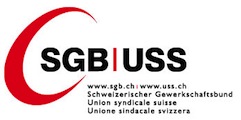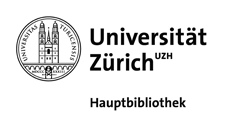Publications des institutions partenaires
When Birds of Different Feather Flock Together: The Emerging Debate on "Organization as Communication" in the German-Speaking Countries
Institution partenaire
English / 01/01/2013
Lessons in Fluidity: Anonymous and the Communicative Formation of Organizational Identity
Most research on organizational identity tends to take an essentialist perspective, differentiating between an identity construed internally by members of the organization and an image construed by external actors. However, the duality of identity and image struggles with capturing more fluid, open, or partial organizational arrangements, where it is difficult to uphold this...
Institution partenaire
English / 01/01/2013
Managing corporate legitimacy and the UN global compact
In this article, we explain why managing legitimacy is vital for corporations and how business firms can employ strategies to maintain their legitimacy. We then discuss the organizational capacities that each legitimacy strategy implies and point out their inherent tensions. Based on the results of an empirical study, we show how two large corporations have handled these tensions and...
Institution partenaire
English / 01/01/2013
The organizational implementation of corporate citizenship: An assessment tool and its application at UN global compact participants
The corporate citizenship (CC) concept introduced by Dirk Matten and Andrew Crane has been well received. To this date, however, empirical studies based on this concept are lacking. In this article, we flesh out and operationalize the CC concept and develop an assessment tool for CC. Our tool focuses on the organizational level and assesses the embeddedness of CC in organizational...
Institution partenaire
English / 01/01/2013
Endings and visions of new beginnings: The effects of source of unemployment and duration of unemployment on entrepreneurial intent
This study adopts the push-entrepreneurship perspective and develops a conceptual framework grounded in prospect theory, in order to investigate whether source of sunemployment, layoff in particular, and duration of unemployment stimulate entrepreneurial intent. We also propose that fear of failure and risk propensity moderate the source/duration–entrepreneurial intent relationships...
Institution partenaire
English / 01/01/2013
Explaining cooperative enterprises through knowledge acquisition outcomes
This paper develops a model of a cooperative enterprise and compares it to a vertically separated market. In our model of a multi-stage production process, agents can acquire costly knowledge to decrease production costs. Our model shows that the cooperative acquires less non-generalizable knowledge than the market, but more generalizable knowledge if the large member in the...
Institution partenaire
English / 01/01/2013
Trade-offs are not exogenous
Trade-offs between competitive priorities are often seen as exogenous – managers accept them as a given downside while simultaneously addressing multiple competitive priorities. However, some companies seem to face fewer trade-offs than others. The question is how companies reduce their trade-offs to successfully compete on multiple competitive priorities simultaneously. We address...
Institution partenaire
English / 01/01/2013
Essays on organizational search and adaptation in complex environments
Institution partenaire
English / 01/01/2013
Advertising pricing models in media markets: Lump-sum versus per-consumer charges
Based on a model of asymmetric competition between a pay and a free media platform, this paper investigates advertising pricing models. The pay media platform generates revenues from media consumers through subscription fees, while the free media platform generates revenues from charging advertisers either on a lump-sum basis (regime A) or on a per-consumer basis (regime B). We show...
Institution partenaire
English / 01/01/2013
Incentive effects of bonus taxes in a principal-agent model
Several countries have implemented bonus taxes for corporate executives in response to the current financial crisis. Using a principal-agent model, this paper investigates the incentive effects of bonus taxes by analyzing the agent's and principal's behavior. Specifically, we show how bonus taxes affect the agent's incentives to exert effort and the principal's...
Institution partenaire
English / 01/01/2013
International R&D and Manufacturing Networks: Dynamism, Structure and Absorptive Capacity
We analyze the absorptive capacity (AC) process of a manufacturing company with central R&D and an internationally distributed manufacturing network. Prior research shows that an implementation of the lead factory (LF) is especially supportive if the international manufacturing network struggles with implementing new products and processes. We analyze determinants of AC and show...
Institution partenaire
English / 01/01/2013
How to combine human resource management systems and human capital portfolios to achieve superior innovation performance
Firms generate new knowledge that leads to innovations by recombining existing knowledge sources. A successful recombination depends on both the availability of a knowledge stock (human capital pool) that contains innovation-relevant knowledge and the regulation of the knowledge flow through the application of human resource management practices. However, while human resource theory...
Institution partenaire
English / 01/01/2013
Zu den offenen Fragen des Board Primacy Konzeptes in der Theorie der Corporate Governance
Institution partenaire
English / 01/01/2013
Inter-market arbitrage in betting
We show that a combined bet at the bookmaker and at the bet exchange market yields a guaranteed positive return in 19.2% of the matches in the top five European soccer leagues. Moreover, we find that all considered bookmakers frequently offer arbitrage positions, and that they experience, on average, negative margins from these postings. Our findings indicate that bookmakers set...
Institution partenaire
English / 01/01/2013
Divide and Conquer: A New Approach to Dynamic Discrete Choice with Serial Correlation
In this paper, we develop a method to efficiently estimate dynamic discrete choice models with AR(n) type serial correlation of the errors. First, to approximate the expected value function of the underlying dynamic problem, we use Gaussian quadrature, interpolation over an adaptively refined grid, and solve a potentially large non-linear system of equations. Second, to evaluate the...
Institution partenaire
English / 01/01/2013
(Self-)Selection, Incentives and Resources - a Personnel Economics Perspective on Academia and Higher Education
Institution partenaire
English / 01/01/2013
Apprentice pay in Britain, Germany and Switzerland: Institutions, market forces and market power
The pay of metalworking apprentices is high in Britain, middling in Germany and low in Switzerland. We analyse these differences using fieldwork evidence and survey data, drawing on both economic and institutionalist theories. Several institutional attributes influence apprentice pay, partly by affecting supply and demand in markets for training places. Institutional support for...
Institution partenaire
English / 01/01/2013
Careers and productivity in an internal labor market
This paper contributes to the existing literature by evaluating the effects of age and tenure on careers and productivity within an internal labor market. We use the administrative personnel records of a long balanced panel of blue-collar workers from a manufacturing firm in Germany with a distinct classification of wage groups and unique information on workers’ productivity in form...
Institution partenaire
English / 01/01/2013
Pages
Le portail de l'information économique suisse
© 2016 Infonet Economy












